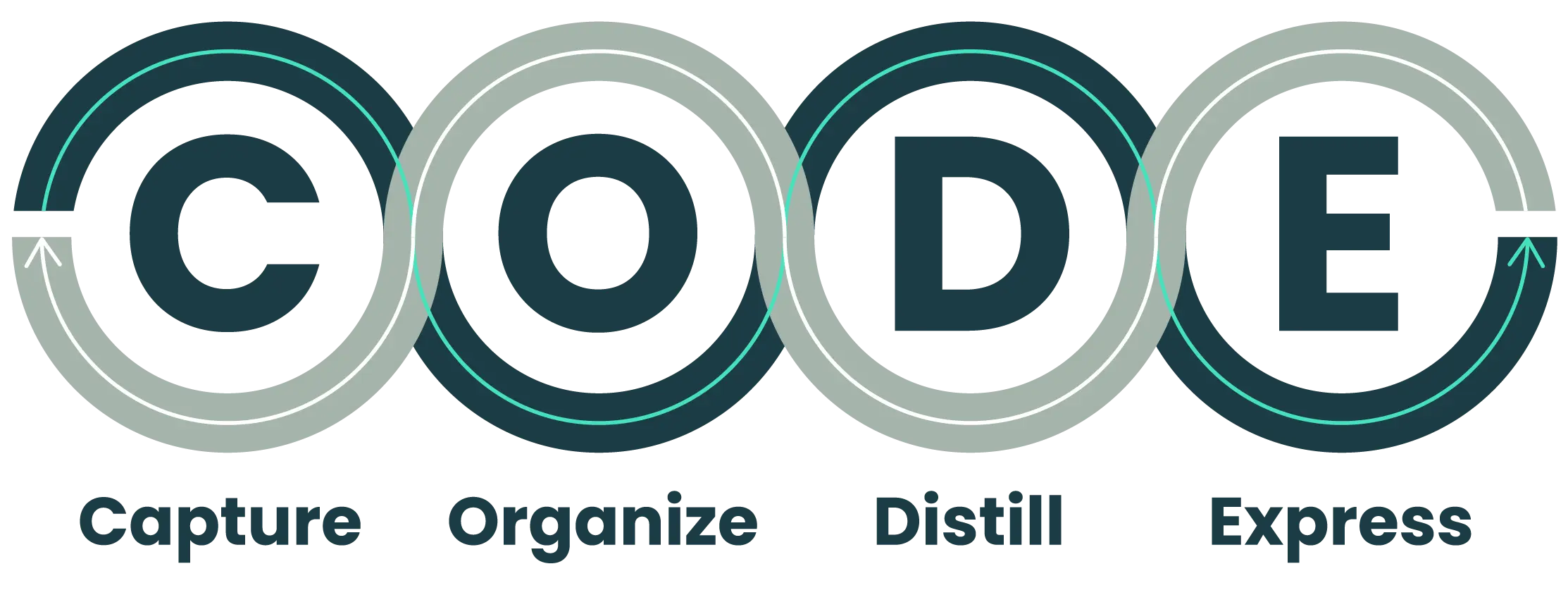Most skills and improvements are deeply symbiotic.
While individual skills are useful alone, they have a compounding effect when they’re part of a system.
For example:
If you get serious about meditation… it doesn’t just improve your relationship to your mental health. It can spill over, and improve your relationships with your partner, family, or business.
When you begin to eat healthy… you don’t just feel or look better. You’ll likely also have more energy – for your kids or work or whatever else is important in your life. And when you start giving yourself permission to relax, explore your interests, and forgive yourself for small mistakes… you might start giving those around you the same level of grace and safety in vulnerability.
This same phenomenon applies when you begin to build your Second Brain.
A Second Brain has four primary components – each one can be improved, one by one, in isolation.
The wild truth is that improving just a single element of your productivity and knowledge management practices can have a dramatic impact on your life.
But when all four parts come together, you have the opportunity to truly transform your productive and creative outputs.
Here are the four elements of an effective Second Brain, summarized by the CODE Method:

-
Capture
Most of us capture information haphazardly.
We might email ourselves a quick note, brainstorm ideas in a Word document, or take notes in a book’s margins. This wouldn’t be an issue… except when we don’t have a consistent practice for capturing those notes so we can do something with them later.
-
Capture In One Location
Using digital note-taking apps to store diverse information that syncs across devices lets you discover unexpected connections and easily access creative material when needed.
-
Capture Like A Curator
Information overload can be tempting with endless interesting content at our fingertips. Taking a curator’s approach by saving content for later and being selective about what we consume helps us stay in control of our information diet.
-
Capture What Resonates
Don’t over-analyze what to keep in your notes - instead of intellectual decision-making, save things that intuitively resonate with you. This practice not only helps identify opportunities but also deepens self-understanding.
-
-
Organize
-
Organize by Actionability
Organizing your files and information according to when you’ll need them next using Para System
-
-
Distill
Reframing information so it’s maximally helpful to your future self using Progressive Summarization
-
Express
Expressing is about using what you’re learning to make new things.